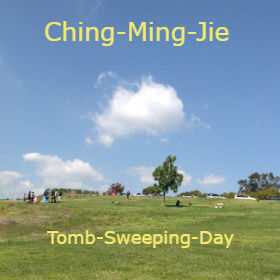Jie-chi, jie-qi (Globe Language) (noun) 节气 (Chinese): solar terms, literally in Chinese “jie” 节 = season, “chi” 气 = weather.
Example:
Jie-chi 节气 (solar terms) originated in ancient China for agricultural work, also known as 24 Jie-chi, later spread to Korea, Vietnam, Japan, and other countries in Asian.
Jie-chi is any of 24 points in the traditional Chinese lunisolar calendar that matches a particular astronomical event or signifies some natural phenomenon. Jie-chi is spaced 15° apart along the ecliptic and is used by lunisolar calendars to stay synchronized with the seasons, which is crucial for agrarian societies. Jie-chi is also used to calculate intercalary months in the Chinese lunisolar calendar; which month is repeated depends on the position of the sun at the time. Since ancient China, every Jie-chi (solar term) has 3 periods 三候 and each period lasts for 5 days. There are 15 days in a Jie-chi cycle. There are also three flower letter breezes (花信风)( literally in Chinese “hau” 花 = flower, “xin” 信 = letter, “feng” 风 = wind.) for each period for a total of 15 days in a jie-chi cycle.
The five solar terms of Xiaoshu, Dashu, Chushu, Xiaohan, Dahan reflect the change of temperature, which is used to indicate the degree of cold and heat in different periods of the year; the four solar terms of rain, valley rain, light snow, and heavy snow reflect the precipitation phenomenon, indicating the time of rainfall and snowfall. And the intensity; the three solar energy surfaces of white dew, cold dew, and frost reflect the phenomenon of condensation and sublimation of water vapor, but they actually reflect the process and degree of gradual temperature decline: when the temperature drops to a certain level, the condensation of water vapor appears; temperature continues decline, not only increased condensation, but also getting cooler; when the temperature drops below zero degrees Celsius, water vapor condenses into frost.
The Xiaoman and Mangzhong reflect the maturity and harvest of the relevant crops; Jingzhe and Qingming reflect the natural phenology, especially Jingzhe, which uses the recovery of the first thunder in the sky and the wakeup of underground stingworms to predict the return of the spring.

